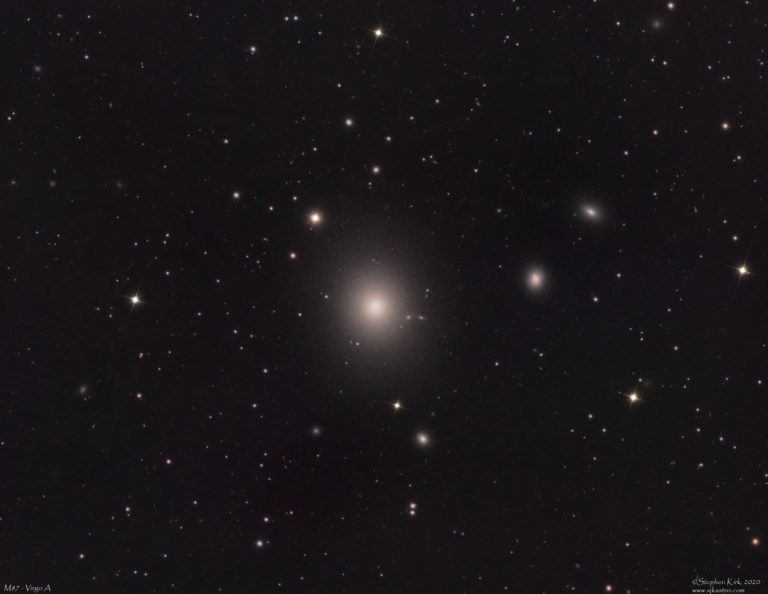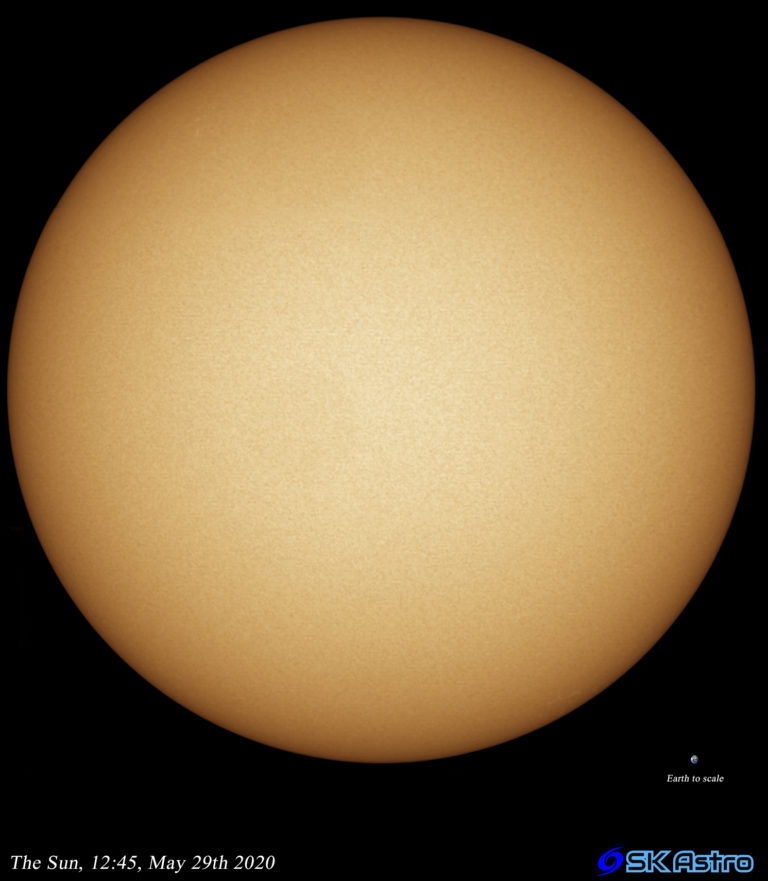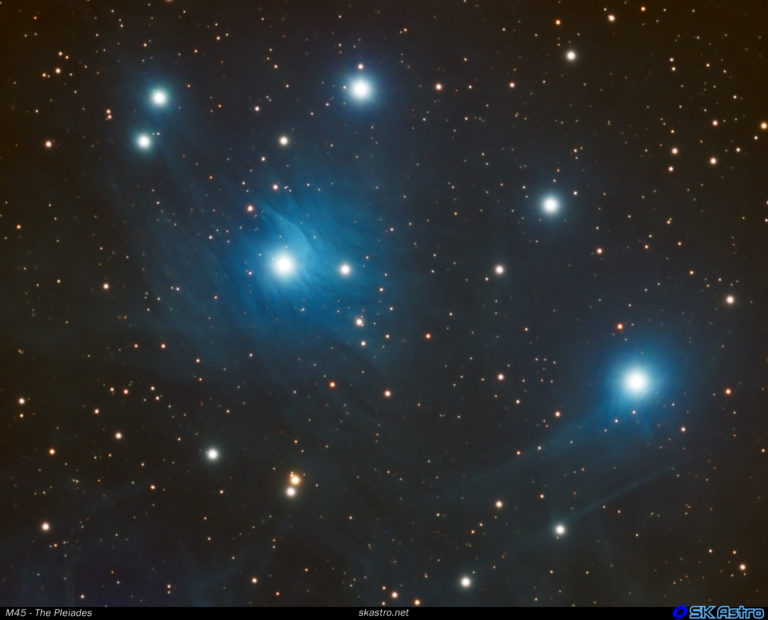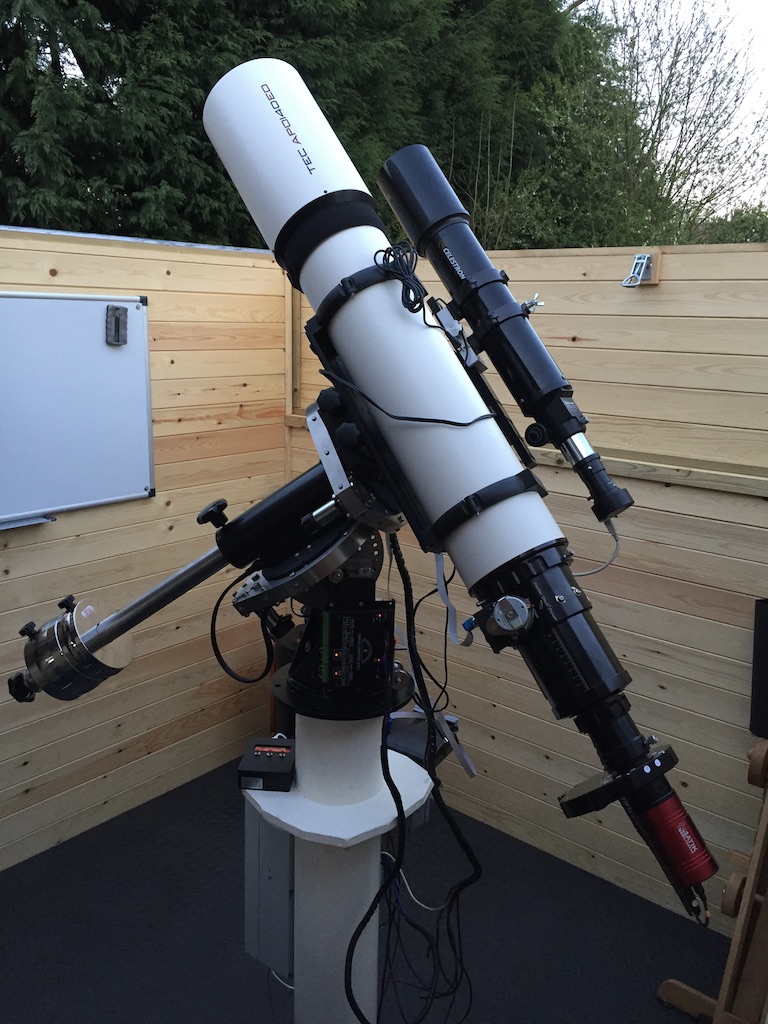3C273 3C273 Annotated Not the most exciting of images but significant for what is actually shown here. Just looking at the photo on the above left, you’d be forgiven for thinking this was just an image of a star field, a boring one at that. However, this is a picture of the Quasar 3C273 in Virgo, one of the most distant objects possible for an amateur astronomer with instruments available to the average amateur to see. Light left this object two billion years ago! 3C273 is the 273rd object in the Third Cambridge University catalogue of radio objects. It was discovered as an extremely bright source of radio waves long before it was identified visually. It was the first ever quasar to be discovered in 1959. It represents an extremely active core of a very distant galaxy, so distant that we only see the core and not the outer parts…
M87 M87 is a supergiant elliptical galaxy at the heart of the Virgo cluster of galaxies and is visible in many pictures of the famous Markarian’s Chain. It is about 65 million light years away and, after the Sun, is the brightest source of radio waves in the sky – at that vast distance! The galaxy is one of the most massive in the local universe at two hundred times the mass of our own Milky Way galaxy. M87 harbours one of the most massive Black holes in the Universe at 8 billion solar masses. The galaxy is surrounded by a swarm of globular clusters, about 12000 of them, compared to only 200 from our galaxy. The galaxy is so large that from The Earth the extended galaxy is almost the size of the full moon. Image Technical Data Imaged from by back yard in Nottingham, UK with my TEC…
The Sun, 14:40 on 29th May 2020 TEC140 refractor, Baader Herschel Wedge, ASI 174MM camera. Captured with Firecapture, Stacked with AutoStakkert, developed with PixInsight and Photoshop.
Introduction M45 – The Pleiades Presented here is M45, the famous Pleiades Open Cluster of stars. Image was captured in one imaging run on the night of 18th December 2019. This image shows a small sub-section of The Pleiades, the “head”. This main triangle shape of the bright stars Maia, Electra and Taygeta is visible to the naked eye. Known since ancient times from cultures all over the world and even featured in prehistoric cave paintings, The Pleiades is a large, open cluster of stars in Taurus, visible late autumn and winter in the Northern Hemisphere The Pleiades are actually composed of hundreds of stars, about 470 light years away. The cluster is vert young, about 20 million years, and is moving through a cloud of interstellar gas and dust. At some point many millions of years in the future, the stars will lose their mutual gravitational attraction an d will…
TEC 140 mounted on MESU 200 Please note, the opinions expressed here regarding my TEC 140 are mine. No one paid me any money, offered me any free equipment or offered me any discounts or services on anything astronomy or otherwise nor did they request I write this article. I bought my telescope with my own money and I offer my thoughts, ideas and opinions to help others because I enjoy doing so, not for material or financial gain for myself. If the scope sucks, rest assured I will say so. Introduction Mention the word “telescope” to the general public and they will almost certainly think of what we astronomers know as a refractor. If you asked a child to draw a telescope, it’s a refractor they will draw for you. Refractors are the oldest of telescopes and it was a refractor that Galileo pointed at the stars and Jupiter…





